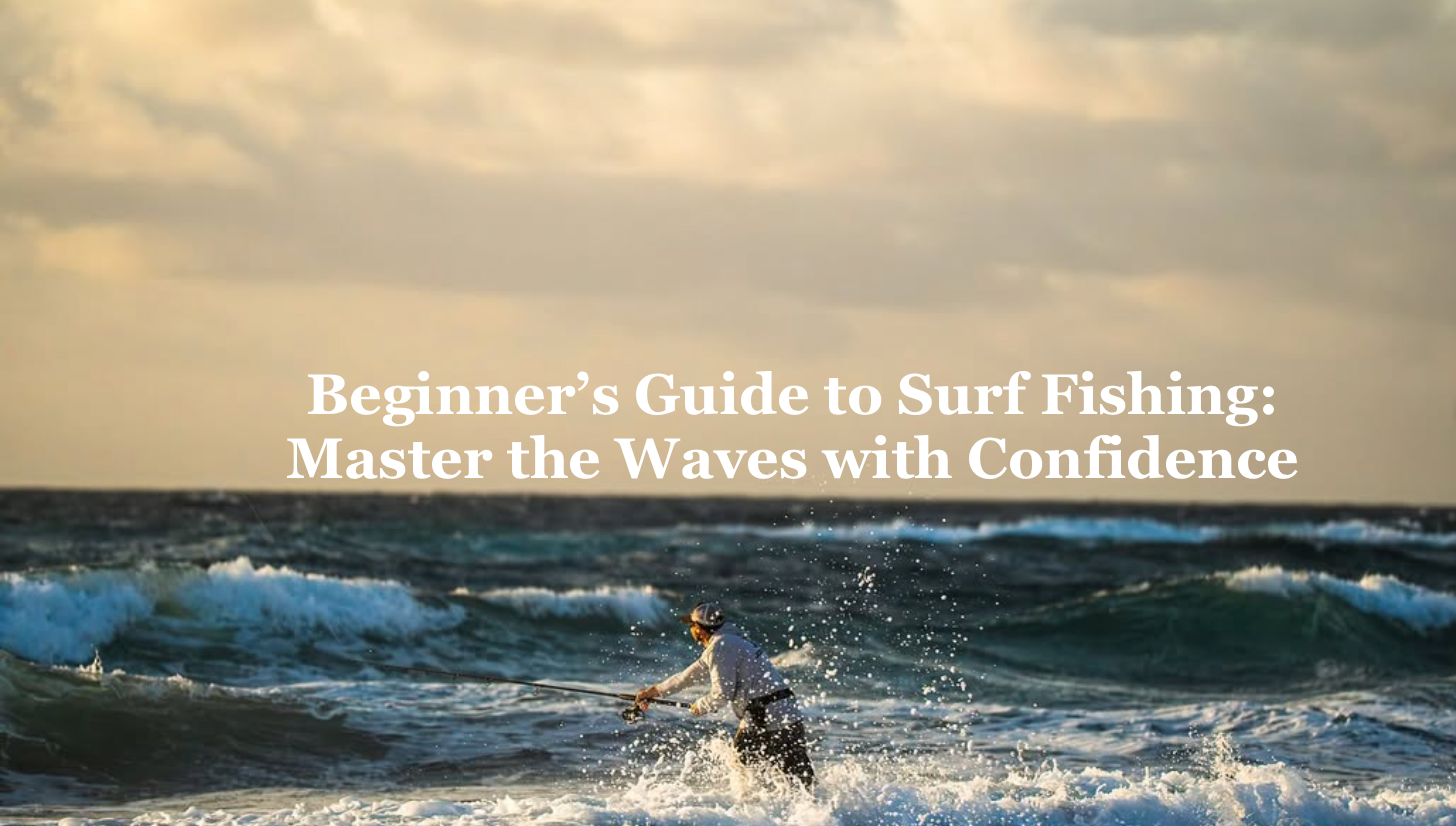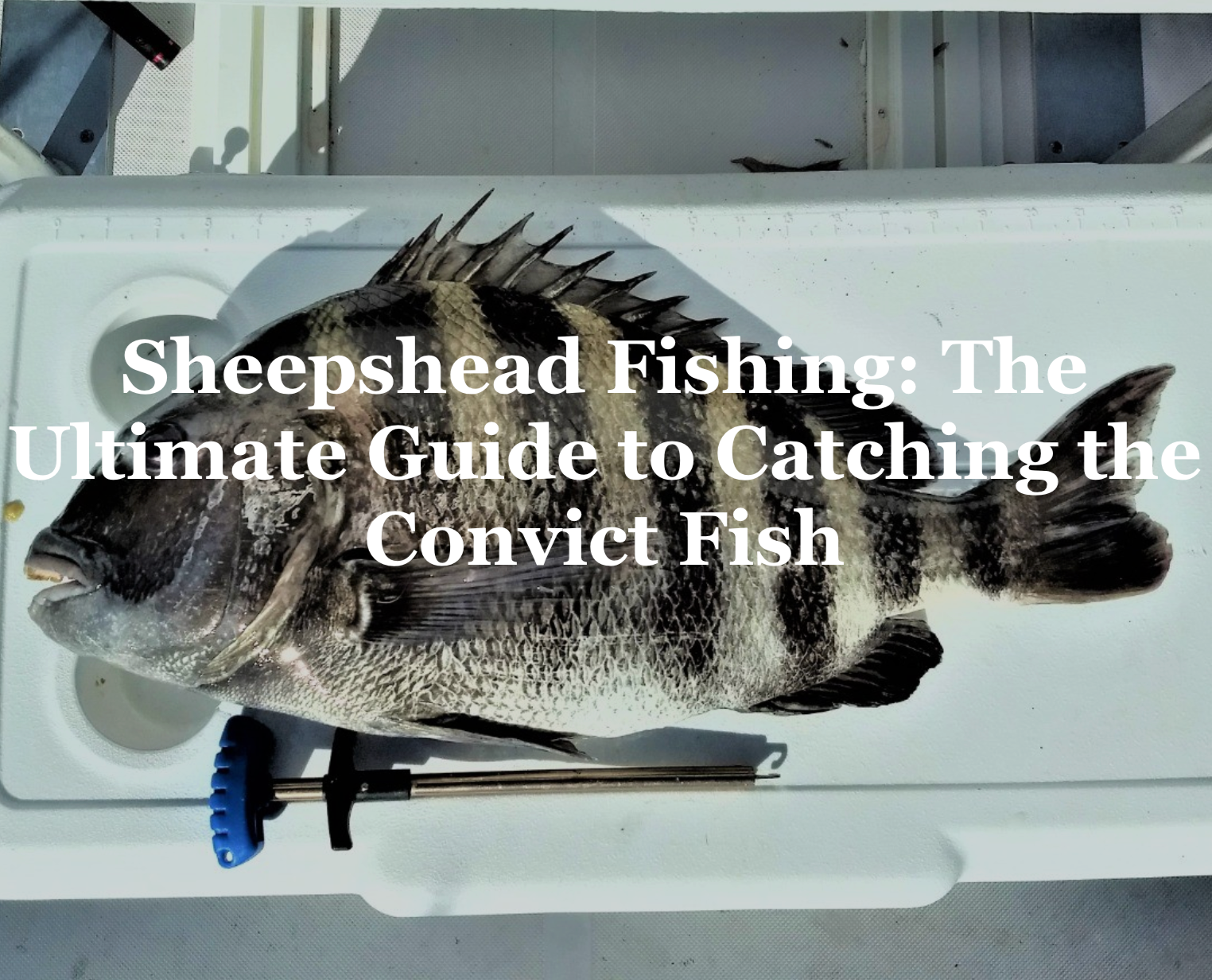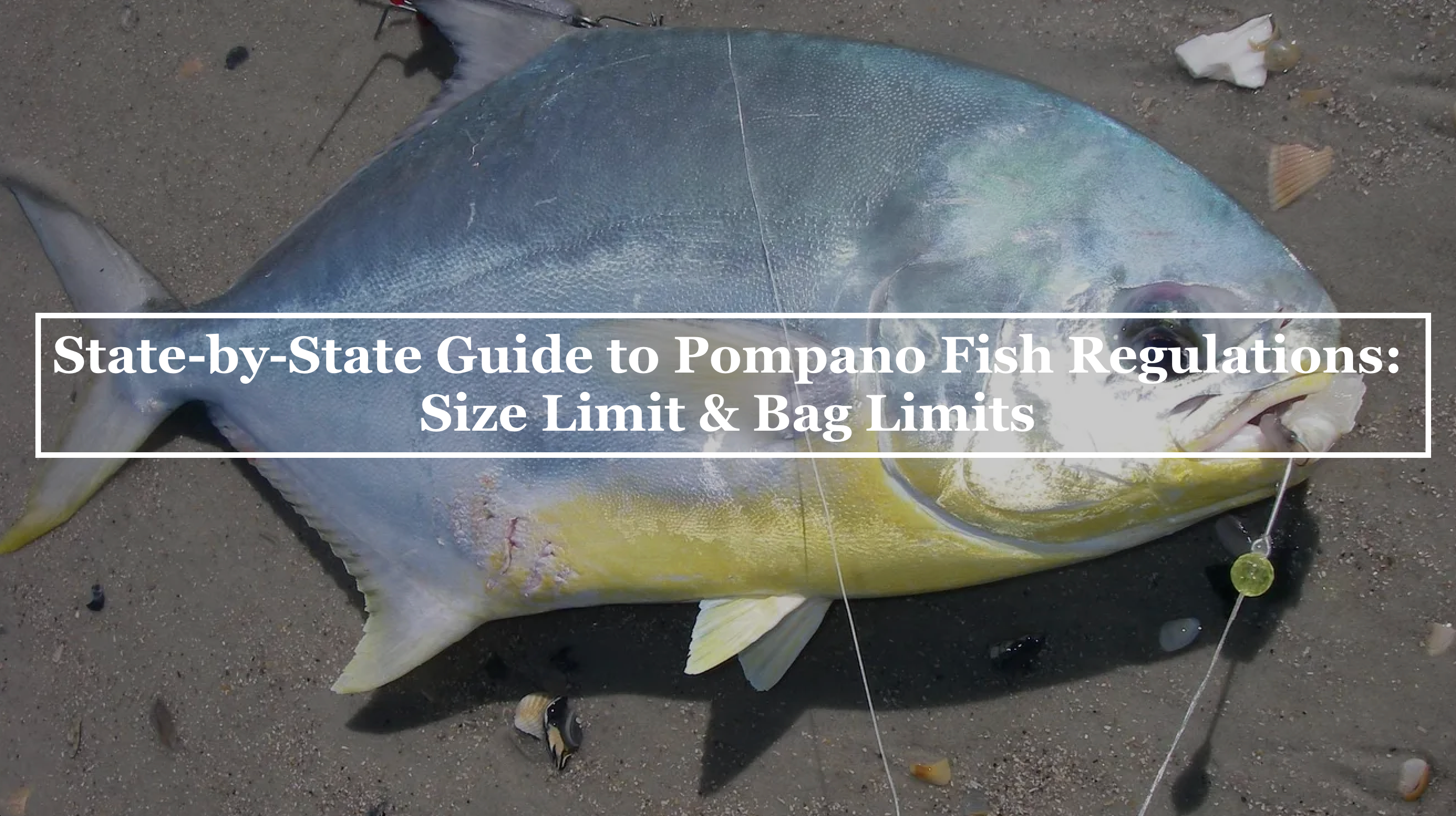Surf fishing offers thrilling coastal adventures, targeting pompano, redfish, and sharks from shore. For beginners, mastering how to surf fish starts with the right setup: an 8-12 ft rod, 4000-6000 reel, and 20-30 lb braided line. Use pyramid sinkers (1-4 oz) and 1/0-4/0 hooks with shrimp. Tackle Pier’s expert tips guide you to cast into waves and reel in your first catch confidently.
What Is Surf Fishing and Why Try It?
Surf fishing involves casting from beaches, jetties, or piers into the ocean’s surf zone, targeting fish like pompano or redfish. Accessible without a boat, it’s beginner-friendly and showcases nature’s beauty. A solid surf fishing setup—8-12 ft rod, 20-30 lb braided line, and 1-4 oz sinkers—ensures success. From drone fishing to mastering casts, this guide covers essentials for beginners to hook their first catch.
How to Surf Fish: The Basics for Beginners
To surf fish, scout spots with troughs or rip currents where fish feed. Fish at dawn, dusk, or tidal shifts for best results. Use a fish-finder rig with a 1-4 oz pyramid sinker and 1/0-3/0 hook, baited with shrimp or mullet. Cast past breakers, secure your rod in a sand spike, and monitor for bites. Practice on calm days to master your surf fishing setup and technique.
Best Fishing Gear for Surf Fishing
The best fishing gear for surf fishing ensures you’re ready to cast, hook, and land fish in challenging coastal conditions, making how to surf fish both effective and enjoyable. From rods to weights, bags, and jackets, the right equipment elevates your experience.
Gear Checklist:
-
Rod and Reel: Medium-heavy rods (8–12 feet) are versatile for various conditions.
-
Fishing Line: Both monofilament and braided lines have their merits; choose based on target species and conditions.
-
Terminal Tackle: A variety of sinkers and hooks (sizes 1/0 to 8/0) cater to different species and bait sizes.
-
Other Essentials: Sand spikes, bait bucket with aerator, sharp knife, pliers, first aid kit, sunscreen, waders, and a valid fishing license.
What Size Spinning Reel for Surf Fishing?

For surf fishing, a 4000-6000 series spinning reel is ideal for beginners, balancing power and ease for catching redfish. It holds 200-300 yards of 15-30 lb braided line, perfect for long casts and strong currents. Pair with a 9-11 ft rod for leverage. The right reel size ensures reliable casts and fish landing, crucial for mastering how to surf fish successfully.
What Is the Best Saltwater Spinning Reel for Surf Fishing?

For surf fishing, top saltwater spinning reels include the Penn Battle III (5000-6000 series) and Daiwa BG (4500-6000). With sealed bearings, 15-20 lb drag, and capacity for 200-300 yards of 20-30 lb braided line, they resist corrosion and handle redfish or striped bass. These durable, smooth-casting reels are perfect for beginners mastering how to surf fish in tough saltwater conditions.
Surf Fishing Rods
Surf fishing rods, like the St. Croix Mojo Surf or Penn Battalion II, are vital for long casts and battling fish. A medium-heavy 8-12 ft rod suits beginners, with graphite or composite blanks for durability. A 10-ft rod fits most beaches; 12-ft maximizes distance. These rods handle pompano or sharks, ensuring effective surf fishing in varied conditions with a reliable setup.
Surf Fishing Bags
Surf fishing bags, like the Shimano Bluewave Surf Bag or Plano Surf Mate (20-40 liters), keep tackle organized and protected. Waterproof or water-resistant, they feature compartments for sinkers, hooks, lures, and pliers. Adjustable straps and rod holders ensure hands-free carrying on beach treks. These bags are essential for the best surf fishing gear, enhancing accessibility and efficiency on the shore.
Surf Fishing Jackets
Surf fishing jackets, like Grundéns Weather-Boss or Columbia PFG Terminal Tackle, ensure comfort with waterproof, breathable fabrics and UPF 50+ protection. Featuring adjustable hoods, sealed zippers, and pockets for tools, they suit coastal weather. Lightweight for warm climates or insulated for cooler seasons, these jackets support mobility for casting with a 9-11 ft rod, enhancing your surf fishing experience.
How Far Out Do You Need to Cast for Surf Fishing?
For surf fishing, cast 50-100 yards to hit troughs or sandbars where pompano and flounder feed; 30-50 yards works near shallow structure. For sharks or kingfish, aim for 100-150 yards using a 10-12 ft rod, 1-2 oz pyramid sinkers, and braided line. Practice overhead casts at a 45-degree angle for distance. Start short for accuracy, then extend range; kite fishing can reach 300+ yards.
Methods to Get Your Bait Out Beyond Breakers for Surf Fishing
To surf fish effectively, get bait past breakers where fish feed. Use kites, drones, or bait cannons to reach 100-300+ yards, targeting kingfish, tarpon, or sharks. These innovative tools, part of essential surf fishing tackle, enhance your reach beyond the surf zone. With a 10-12 ft rod and braided line, these methods boost your chances of landing trophy catches offshore.
How to Kite Surf Fishing: Reach Deeper Waters
Kite surf fishing uses a 7-9 ft delta kite to cast 100-300 yards offshore. Clip a baited line (shrimp or mullet on a 2/0-4/0 circle hook) to the kite’s release clip, launched from a dedicated rod in 10-15 mph winds. The kite drops bait where big fish feed; a strike releases the clip for fighting fish with your main rod, perfect for kite fishing from shore.
Drones for Surf Fishing
Drones like SwellPro SplashDrone deliver bait up to 500 yards offshore, surpassing kite fishing for precision. Attach a baited line (3/0 hook with cut bait) to a release mechanism. Launch from the beach, fly to sandbars or rip currents, and drop bait remotely. Ideal in calm or variable winds, drones cost $500-$2000. Check local drone fishing laws and practice for mastery in your surf fishing setup.
Bait Cannon for Surf Fishing
A bait cannon, like Surf Rocket, launches bait 100-200 yards, perfect for beginners learning how to surf fish. Load a 2-4 oz sinker and 2/0-5/0 hook with squid, aim at 45 degrees, and fire from the beach. This budget-friendly ($100-$300) tool targets redfish or sharks, offering simplicity over kite fishing and affordability compared to drones, though with less precision.
Tackle Needed for Surf Fishing
The tackle needed for surf fishing forms the backbone of your coastal angling success, ensuring you’re equipped to cast, hook, and land fish in dynamic surf conditions. From weights to rigs and lures, the right gear makes how to surf fish accessible and effective for beginners. Below, we break down essential tackle components, for beginner-friendly gear like rods and reels for pompano or redfish.
Surf Fishing Tackle Setup
Build your surf fishing tackle with an 8-12 ft medium-heavy rod and 4000-6000 series spinning reel, spooled with 20-30 lb braided line for casting distance. Use a 20-40 lb fluorocarbon leader (2-3 ft) for abrasion resistance. Add 1-4 oz pyramid or sputnik sinkers, swivels, and 1/0-8/0 hooks for shrimp or mullet. Include sand spikes, bait bucket with aerator, long-nose pliers, and waders for a complete setup.
Best Surf Fishing Rigs
Top surf fishing rigs boost catches in the surf zone. The fish-finder rig, with a 1-4 oz pyramid sinker, 2/0-4/0 circle hook, and 20 lb fluorocarbon leader, targets pompano or redfish with shrimp. The high-low rig, using 1/0-3/0 hooks on dropper loops, doubles bait for whiting. For sharks, a Carolina rig with a 5/0-8/0 hook and 3-4 oz sinker excels. Pair with a 9-11 ft rod for versatile surf fishing.
What Size Hook for Surf Fishing?
Choosing the right hook size for surf fishing depends on target species and bait. For pompano, whiting, or redfish, use 1/0-3/0 hooks; 2/0-4/0 circle hooks for catch-and-release. Small 1-2 hooks suit whiting with cut bait, while 5/0-8/0 hooks target sharks or tarpon with mullet chunks. Match shrimp to 1/0-2/0, larger baits to 3/0-5/0. Opt for corrosion-resistant Mustad or Gamakatsu hooks for durable surf fishing rigs.
Surf Fishing Weights
Surf fishing weights, or sinkers, anchor bait against currents in surf fishing tackle. Pyramid sinkers (1-4 oz) grip sandy bottoms, ideal for whiting (1-2 oz) or redfish (3-4 oz) in calm to rough surf. Sputnik sinkers (2-5 oz) with prongs excel in heavy surf, minimizing drift. Match sinkers to 15-30 lb fishing line and 8-12 ft rods for balanced casting, keeping bait in fish-feeding zones.
How to Fish a Bucktail Jig in the Surf
Bucktail jigs are versatile for surf fishing, mimicking baitfish to attract striped bass or flounder. Cast past the breakers, let the jig sink, then retrieve with a hopping motion—lift the rod tip, reel, and pause for a flutter. Add shrimp or gulp baits for appeal. This technique excels in rough surf or near jetties, increasing your catch rate.
Best Saltwater Lures for Surf Fishing
Top saltwater lures enhance surf fishing success, targeting bluefish or striped bass. Bucktail jigs imitate baitfish, while diamond jigs, retrieved with jerks, draw kingfish. Soft plastics like paddle tails on jigheads catch flounder. Add shrimp for scent. These lures, paired with optimal surf rigs, adapt to diverse conditions, improving your chances of landing fish.
Fishing Bucktails in the Surf
Fishing bucktails in the surf is a dynamic technique for how to surf fish, targeting species like striped bass or flounder. Use 1-2 oz bucktail jigs, with hair and lead heads mimicking baitfish, cast beyond breakers. Let the jig sink, then retrieve with a hopping motion—lift the rod tip and reel, pausing for a fluttering fall. Tip with shrimp or gulp baits for extra appeal, especially in murky water or near jetties.
Surf Fishing with Spoons
Surf fishing with spoons leverages shiny, wobbling lures to attract aggressive fish like Spanish mackerel or bluefish. Use 1-2 oz casting spoons (e.g., Krocodile or Hopkins), Retrieving steadily with occasional twitches to mimic fleeing baitfish, ideal near sandbars or rip currents. Spoons excel in clear water or windy conditions. Pair with a 20 lb fluorocarbon leader to prevent bite-offs, making them a staple in best surf fishing rigs.
When is the best time for surf fishing?
The best time for surf fishing is dawn and dusk, when fish feed actively. At dawn, fish hunt near shorelines, targeting less vigilant prey. Dusk sparks a final forage before nightfall. Both times leverage diurnal patterns, with morning light or evening glow boosting movement. Plan for these windows to maximize catches.
Tides are key in fishing; high or rising tides boost catch potential as species move in to feed. Aligning peak periods with local tide charts enhances success. Skilled anglers leverage these conditions for productive sessions, enjoying the serenity and beauty of shifting skies at dawn or dusk.
Tips for Timing:
- Use tidal charts to plan around high tide.
- Consider overcast days, but be cautious of rip currents and sudden weather changes.
Scouting for the Perfect Spot
Identifying the ideal fishing location, or "reading the beach," is an art every surf angler must learn. Low tide reveals the underwater terrain, allowing you to spot promising features like sandbars, troughs, and rock jetties.
What to Look For:
- Channels between the sandbars and the shore, known as troughs, are hotspots for fish.
- Rip tides and deeper holes are also lucrative spots but remember their locations for safety.
The Fish You Can Expect to Catch
The diversity of catches is one of the most thrilling aspects of surf fishing. From the East Coast's Striped Bass and Flounder to the Gulf Coast's Redfish and Pompano, each region offers unique species.
Regional Favorites:
- East Coast: Striped Bass, Croaker, Bluefish
- Gulf Coast: Redfish, Snook, Pompano
- West Coast: California Corbina, Halibut, Rockfish
Conclusion
Surf fishing is an accessible and rewarding hobby that offers something for anglers of every level. By understanding the basics of casting, timing your sessions with the tides, finding the fish by reading the beach, and preparing with the right gear, you're well on your way to a successful surf fishing experience.
Remember, the journey of learning and discovery is just as fulfilling as the catch. Embrace each sunrise with anticipation and respect the sea's bounty. Happy fishing!
















Share:
How to Land a Fish: The Ultimate Beginner’s Guide to Success
Ultimate Guide to Jetty Fishing: Tips, Gear, and Trips